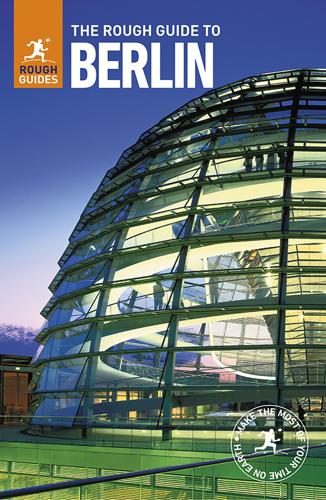
The Rough Guide to Berlin
by
Rough Guides
Known for their large immigrant populations and edgy charm, both Gesundbrunnen and Wedding are up-and-coming areas peppered with the kind of underground spaces that were once common in Prenzlauer Berg during the 1990s. ARRIVAL AND GETTING AROUND: PRENZLAUER BERG AND AROUND Prenzlauer Berg The quickest way to get to Prenzlauer Berg is by public transport from Alexanderplatz. Tram #M4 travels up Greifswalder Strasse to Weissensee, the #M2 passes along Prenzlauer Allee, and the #M1 can be taken from Hackescher Markt, Oranienburg Strasse and other parts of Mitte up to Eberswalder Strasse and Schönhauser Allee. The U2 stops at Senefelder Platz and Eberswalder Strasse, both useful starting points to generally explore the district, and S-Bahn stations Prenzlauer Berg and Schönhauser Allee, both on the city’s Ringbahn, are also convenient for its northern sections.
…
To the west of Prenzlauer Allee, another arterial road – Schönhauser Allee – runs close to the former East–West border and is the main route to some of Prenzlauer Berg’s most gentrified streets. This is an area to explore on foot, taking in sights such as the Kulturbrauerei and Kollwitzplatz, which was once another important area for Jews, as a large nearby cemetery and a restored synagogue attest. North of Prenzlauer Berg lies the district of Pankow (not to be confused with the larger borough of Pankow – Berlin’s most populous – which also includes Prenzlauer Berg and Weissensee among its thirteen districts). Once home to much of the GDR’s elite, Pankow offers a Baroque summer palace and pretty surrounding park, as well as a sedate, almost village-like atmosphere as it gives way to rural Brandenburg.
…
This well-established bistro has a comfortable, friendly but sophisticated feel, with a long wooden bar, black-and-white photos and grand piano. It’s matched by excellent French food (bouillabaise €12.50, rump steak and frites €24.50) and wines. Daily 10am till late. TOP 10 WEEKEND BRUNCH SPOTS Anna Blume Prenzlauer Berg. Cabslam Neukölln. Café Aroma Schöneberg. Café Datscha Friedrichshain. Café Einstein Schöneberg. Morgenland Eastern Kreuzberg. Pappa e Ciccia Prenzlauer Berg. Pasternak Prenzlauer Berg. Schneeweiss Friedrichshain. Zwölf Apostel City West. Dao by Meo Kantstr. 133 030 37 59 14 14, dao-restaurant.de; Savignyplatz; map. Opened by a Berliner and his Thai wife Dao in the 1970s (and now run by Meo), this Thai spot serves tasty dishes that avoid unnatural products and brim with flavour.

Berlin
by
Andrea Schulte-Peevers
Published 20 Oct 2010
Note Gabriele Mucci’s bizarre mural of men chopping wood past the brass-and-glass door and check out the retro neon lamps in the room on your right. Return to beginning of chapter PRENZLAUER BERG Drinking; Eating; Shopping; Sleeping Aging divas know that a facelift can work miracles for a drooping career, and it seems the same can be done with entire neighbourhoods. No other eastern district besides Mitte rejuvenated faster after reunification than Prenzlauer Berg. Once trapped behind the Berlin Wall, it catapulted from war-scarred backwater to charismatic hipster haven in less than a decade. Berliners may whisper behind raised palms that Prenzlauer Berg has lost its edge, but that isn’t stopping them seeking out its bars, cafés and restaurants.
…
* * * TRANSPORT: NORTHERN SUBURBS Bus 107 connects Pankow with central Pankow and the palace; 245 connects Zoologischer Garten with Moabit and Hauptbahnhof. S-Bahn S2 connects Pankow with the Scheunen-vierteland Potsdamer Platz; S8 goes from Pankow to Prenzlauer Berg and Friedrichshain. Tram M1 connects Pankow with Hackescher Markt via Prenzlauer Berg; a main line through Wedding is M13 to Friedrichshain. U-Bahn Pankow is the northern terminus of the U2; Wedding is served by the U8 and U9. * * * Wedding is a sprawling former western district that extends east of the Tegel airport, north of Tiergarten and Mitte and west of Prenzlauer Berg. Seestrasse and Osloer Strasse are major east–west arteries, while Beusselstrasse, Chausseestrasse and the continuation of the latter, Müllerstrasse, are important north–south thoroughfares.
…
With Germany’s newly liberalised shopping hours, there’s bound to be some place open nearby. Of late, Kaiser’s Supermarket (Schöneberg Map; Nollendorfplatz, Schöneberg; Friedrichshain Map; Revaler Strasse 2, Friedrichshain; Prenzlauer Berg Map; Schönhauser Allee 130, Prenzlauer Berg) has been experimenting with keeping some busy branches open until midnight from Monday to Saturday, including those listed here. Prenzlauer Berg also has Fresh ‘N’ Friends (Map; 4171 7250; www.freshnfriends.com, in German; Kastanienallee 26), an organic food store/deli combo that’s open 24/7 but charges premium prices. Also keep an eye out for Spätkauf (Späti in the local vernacular), which are small neighbourhood stores stocked with the basics and open from 8pm to 2am or later; they’re usually found in areas with busy street-life or nightlife.
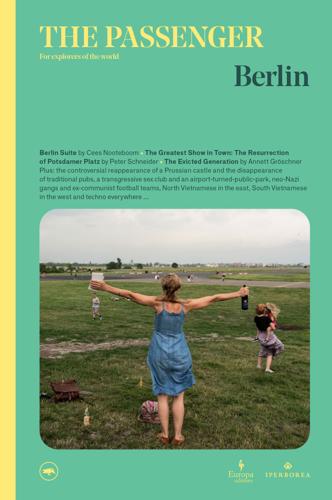
The Passenger: Berlin
by
The Passenger
Published 8 Jun 2021
The availability of accommodation became increasingly squeezed once the principle of ‘restitution before compensation’ was enforced in Prenzlauer Berg and elsewhere. There followed a spate of ‘warm renovations’ – arson attacks, often undetectable, for the purposes of insurance fraud. Prenzlauer Berg was turned into the largest construction site after Potsdamer Platz, and cheap, hard-to-heat dumps with outside toilets became a rarity. The renovations marked the beginning of what, with the harmless-sounding term Abgeschlossenheitsbescheinigung (certificate of completion), led to the flats within the blocks being sold off individually. That changed everything for the Prenzlauer Berg scene, which was sucked up into the vortex of a large-scale population exchange, suffering what might from an outside perspective be viewed as collateral damage.
…
The area’s cultural decline coincides with the tendency to refer to it as ‘Prenzlberg’, a practice whose origins are unclear; the ‘dream in strawberry foliage’ – as the German title of Comrade Couture (Ein Traum in Erdbeerfolie), Marco Wilms’s 2009 film about the underground fashion scene in Prenzlauer Berg, translates – vanished into thin air. Prenzlberg was cute, and what is cute loses the power to unsettle. For the high-income bourgeoisie, mostly from the inheritance generation, it became fashionable to buy a flat in Prenzlauer Berg instead of a home on the edge of the city. Location, location, location was now the guiding principle. The word that Prenzlauer Berg was now domesticated spread far and wide. Meanwhile, cultural institutions were dismantled and funds cut as the financial crisis of 2008 started a capital flight into property – since which time the displacement of those on low incomes has intensified, affecting most artists and writers.
…
In consequence, the children of the well-heeled are now among their own kind in nurseries and primary schools. Nowhere do teachers get to feel their loss of status so keenly as in a Prenzlauer Berg primary school. Now, however, Kreuzberg, too, is being bought up. ‘Fewer than 20 per cent of those living in the Prenzlauer Berg redevelopment areas at the start of renovation are still there today.’ With a short break I have lived in Prenzlauer Berg for thirty-eight years, fifteen of which I have spent as a freelance writer on the edge of Friedrichshain park. My flat has always been my workplace, and here I keep my archive and my library.
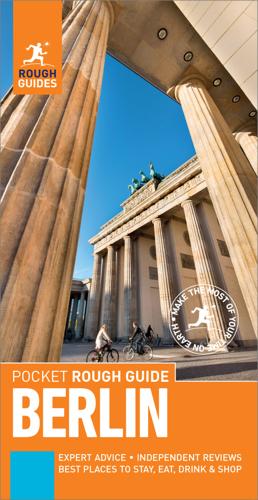
Pocket Rough Guide Berlin (Travel Guide eBook)
by
Rough Guides
Published 16 Oct 2019
The area in between – mid-priced restaurants – make up the majority of eating options, again all over the city, and vary from authentic and traditional German restaurants to stylish dens of cool. A particular Berlin favourite is the weekend brunch buffet, served in cafés across the city – Prenzlauer Berg is a good bet for these. OUR FAVOURITES: Cocolo, Katz Orange, Tempo-Box Drink The majority of bars are independent, and relaxed licensing laws means they can usually close when they like. Though there are a decent spread of bars everywhere, the biggest concentration is around Mitte, Prenzlauer Berg, Kreuzberg and Neukölln, with many operating as cafés during the day serving snacks and light meals, and then as bars later on, staying open all the way through to the early hours.
…
Built in 1913 in what was once Berlin’s music quarter, the building fell into disrepair after World War II. Since then, though, the Meistersaal has become Berlin’s version of London’s Abbey Road, world-renowned for its excellent acoustics. < Back to Potsdamer Platz and Tiergarten Prenzlauer Berg and Wedding Shops Restaurants Snacks Cafés and bars Built in the nineteenth century as a working-class district, Prenzlauer Berg was neglected by the GDR after World War II, becoming a crumbling ghetto for intellectuals, punks and bohemians. Following merciless post-Wall gentrification, wealthy creative types and middle-class families have gravitated here, drawn by the area’s handsome, cobbled streets, leafy squares like Helmholtzplatz and Kollwitzplatz, and its distinctive Alt Berlin atmosphere, with lots of independent bars and cafés, Kastanienallee’s boutiques and the buzzy Sunday flea market at Mauerpark.
…
Following merciless post-Wall gentrification, wealthy creative types and middle-class families have gravitated here, drawn by the area’s handsome, cobbled streets, leafy squares like Helmholtzplatz and Kollwitzplatz, and its distinctive Alt Berlin atmosphere, with lots of independent bars and cafés, Kastanienallee’s boutiques and the buzzy Sunday flea market at Mauerpark. While Prenzlauer Berg’s nightlife has been reduced to a few late-night bars, just over the famous Bösebrücke – where the Bornholmer Strasse border crossing was first officially breached in November 1989 – lies the former Western district of Wedding. Known for its large immigrant population and edgy charm, this up-and-coming borough is peppered with the kind of underground spaces that were once common in Prenzlauer Berg during the 1990s. Gedenkstätte Berliner Mauer MAP Bernauer Str. 111–119 Bernauer Str./ Nordbahnhof 030 46 79 86 666, www.berliner-mauer-gedenkstaette.de.
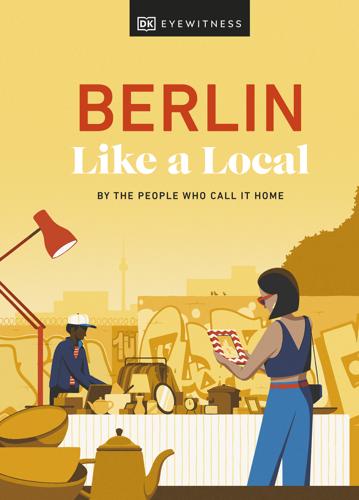
Berlin Like a Local
by
Dk Eyewitness
The pretty café is run by German-Iranian sisters, whose fresh menu is inspired by their Persian heritage – think pistachio rosewater cake and healing herb broth. A bright space and laidback crowd, fresh from their midday yoga sessions, inspire a Zen state of mind, even during the lunch rush. g Brunch Spots g Contents Google Map CAFé MORGENROT Map 1; Kastanienallee 85, Prenzlauer Berg; ///crowds.rooftop.tiptoes; www.cafe-morgenrot.de After the wall fell, Prenzlauer Berg was the epicentre of the left-alternative lifestyle. One place that still retains that spirit, despite gentrification in the area, is Café Morgenrot. Everything here is a beacon for positive change: the café is collectively organized, the food is always vegan or veggie, and many prices are based on a “pay what you can” concept.
…
g Record Stores g Contents Google Map MELTING POINT Map 1; Kastanienallee 55, Prenzlauer Berg; ///same.reddish.tonight; (030) 4404 7131 Vinyl junkies who prefer the funkier elements of house music prize this P-Berg store. With records either stacked in piles or stored in cardboard boxes, this no-frills den lets the music do the talking. The owner takes pride in unearthing jewels from local flea markets, so you don’t have to. g Record Stores g Contents Google Map OYE RECORDS Map 1; Oderberger Strasse 4, Prenzlauer Berg; ///improve.locating.ranged; www.oye-records.com Worship at the altar of dance music?
…
Take Reuterkiez to the north, where authentic restaurants thrive along the stretch of Sonnenallee and artisan workshops draw in expats. A mere hop away in southern Schillerkiez, students enjoy a similar blend of old and new, with refurbished Kneipen (traditional Berlin beer bars) and a festival-like atmosphere in airfield-turned-park Tempelhof. {map 3} Prenzlauer Berg P-Berg, as it’s lovingly known, is to the east what Charlottenburg is to the west: a pretty exclusive place to live. Nestled at the southern end of the large borough of Pankow, P-Berg may be bougie, but don’t be fooled: as the story tends to go, this was once a squatters’ paradise. Today, it’s less edgy and more genteel, thanks to leafy parks, farmers’ markets and boutiques – the majority of which lie in slick Kollwitzkiez to the south, where you can hardly move for prams and dogs.
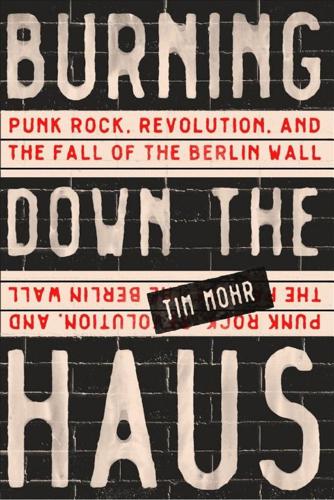
Burning Down the Haus: Punk Rock, Revolution, and the Fall of the Berlin Wall
by
Tim Mohr
Published 10 Sep 2018
Upon her release, A-Micha and Jana moved into a squat on Schliemannstrasse in Prenzlauer Berg. Mita was living nearby in a place she had squatted on Gleimstrasse. The punk council—originally formed at Pfingst Church, now based at Erlöser—and Open Work had started to facilitate the squatting of apartments, particularly in the crumbling nineteenth-century buildings of Prenzlauer Berg and Friedrichshain. There were nearly-entire buildings squatted on Lychenerstrasse, Schliemannstrasse, and Dunckerstrasse in Prenzlauer Berg, and on Simon-Dach-Strasse in Friedrichshain. The punk network maintained a catalogue of empty apartments various people had spotted, serving as a clearinghouse for would-be squatters and helping them get into the places.
…
He threw a few things in a bag, slammed the door shut behind him, and never went home again. 5 The first place Pankow fled to was a friend’s apartment on Göhrener Strasse, just down the road in Prenzlauer Berg. The friend lived in the rectory of Elias Church, which was run by an opposition-friendly minister named Georg Katzorke. Things quickly got complicated there when Pankow fell for the minister’s daughter. The next place he landed was an apartment on Wörther Strasse, near the water tower in central Prenzlauer Berg. A friend of Pankow’s had just fled the country, so Pankow squatted the guy’s now-empty place. There were two versions of squatting in East Germany.
…
Major, shortly after her expatriation Private archive of Major Bergmann Kaiser (left) and Lade (at drums) rehearsing, ca. 1981 Nikolaus Becker/Nikolaus Becker Fotografie East Berlin punks at Plänterwald, ca. 1981 Harald Hauswald / Ostkreuz Agency Punks on Alexanderplatz, ca. 1982 SUBstitut Archive Rosa Extra in Prenzlauer Berg, 1982 Harald Hauswald / Ostkreuz Agency Keule, Colonel, and Esther Friedemann, ca. 1982 Helga Paris Archive Hand-printed poster for the first punk festival at Christus Church in Halle, 1983 SUBstitut Archive Planlos (left to right: Kaiser, Micha Kobs, Lade, Pankow) in Karl-Marx-Stadt, 1983 SUBstitut Archive Mita Schamal and Jana Schlosser in Leipzig, ca. 1983 Christiane Eisler / Transit Agency Mita (middle left) and Jana (middle right) of Namenlos, ca. 1983 Christiane Eisler / Transit Agency Police photo of A-Micha, 1983 SUBstitut Archive A-Micha (at left) and deacon Lorenz Postler (at right, with beard), 1983 SUBstitut Archive Mita (left) and Conny Schleime, ca 1982 SUBstitut Archive Pankow, singer of the band Planlos, ca. 1982 SUBstitut Archive Otze of Schleim-Keim, 1983 SUBstitut Archive L’Attentat, ca. 1984 Christiane Eisler / Transit Agency Poster for the Church from Below, ca. 1988 SUBstitut Archive Stasi surveillance photos of Speiche, undated SUBstitut Archive SUBstitut Archive Feeling B, ca. 1984: Paul Landers (left), Aljoscha Rompe (middle), Flake Lorenz (right) Private archive of Paul Landers Die Anderen (in the second row at left is Toster) Karoline Bofinger Wartburgs für Walter (left to right: Jörn Schulz, Ina Pallas, Bernd Hennig) in Poland, November 1987 Private archive of Jörn Schulz Illegal album by Re-Aktion taped over an official release on the state-owned record label, Amiga Mathias Schwarz Punk festival at Erlöser Church, April 1988 SUBstitut Archive Paul Landers of Feeling B (head of table, at right) and Tatjana Besson of Die Firma (standing behind Landers) at a planning session at the squat Eimer, 1990 Maurice Weiss / Ostkreuz Agency Buildings being razed in Prenzlauer Berg in the late 1980s Harald Hauswald / Ostkreuz Agency Ratte, bassist of HAU and L’Attentat, on a train to Berlin, 1983 Christiane Eisler / Transit Agency IV Rise Above 38 On the last night of 1983, Elias Church in Prenzlauer Berg hosted a punk gathering and somewhat subdued New Year’s party. The event had originally been planned for September, but no church had agreed to let the punks congregate within its walls at the height of the Stasi crackdown.
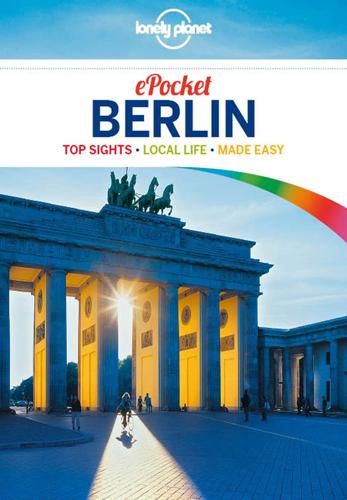
Lonely Planet Pocket Berlin
by
Lonely Planet
and
Andrea Schulte-Peevers
Published 31 Aug 2012
It’s fun to have a look even if you didn’t grow up drinking Red October beer, falling asleep to the Sandmännchen (Little Sandman) TV show or listening to rock by the Puhdys. (www.mondosarts.de, in German; Schreinerstrasse 6; noon-7pm Mon-Fri, 6pm Sat; U-Bahn Samariterstrasse) GRAHAM MONRO/GM PHOTOGRAPHICS © Prenzlauer Berg Prenzlauer Berg went from rags to riches after reunification and emerged as one of Berlin’s most desirable residential neighbourhoods. Its ample charms are best experienced on a leisurely meander. Look up at gorgeously restored townhouses, comb side streets for indie boutiques or carve out a spot in a charismatic cafe.
…
Make your way back to Kastanienallee and stake out a beer table beneath the towering chestnuts of Prater (Click here), Berlin’s oldest beer garden. For dinner, either walk around the corner to Oderquelle (Click here) or – for an even more local experience – hoof it over to Frau Mittenmang (Click here). For a local’s day in Prenzlauer Berg, Click here. Prenzlauer Berg Sights 1 Kollwitzplatz D6 2 Jüdischer Friedhof Schönhauser Allee D7 3 Gethsemanekirche D2 Eating 4 Frau Mittenmang E1 5 A Magica D2 6 Oderquelle B5 7 Zagreus Projekt A8 8 W – der Imbiss B7 9 Zula D6 10 The Dairy E4 11 Schusterjunge D4 12 Konnopke's Imbiss C4 Drinking 13 Prater C5 14 Anna Blume E6 15 Becketts Kopf D3 16 Kaffee Pakolat D3 17 Deck 5 D1 18 Marietta D2 19 Bassy C8 Entertainment 20 Kulturbrauerei C5 Shopping 21 Erfinderladen Berlin D4 22 Flohmarkt am Arkonaplatz A6 23 Goldhahn & Sampson E4 24 Ta(u)sche D4 25 Awear B6 26 Luxus International C5 27 VEB Orange B5 Local Life Sundays Around the Mauerpark Long-time locals, neo-Berliners and the international tourist brigade – everyone flocks to the Mauerpark on Sundays.
…
Casa Camper (www.casacamper.com) Plenty of design cachet, day-lit bathrooms and lounge with free breakfast and refreshments in Scheunenviertel. Short-Stay Apartments Brilliant Apartments (www.brilliant-apartments.de) Seven stylish units with full kitchens in Prenzlauer Berg. T&C Apartments (www.tc-apartments-berlin.de) Nicely furnished and well-kept apartments and flats in Prenzlauer Berg, Mitte and Schöneberg. All Berlin Apartments (www.all-berlin-apartments.com) A wide range of good-value, well- appointed apartments in various neighbourhoods. Be My Guest (www.be-my-guest.com) Good selection of handpicked apartments located throughout the city.
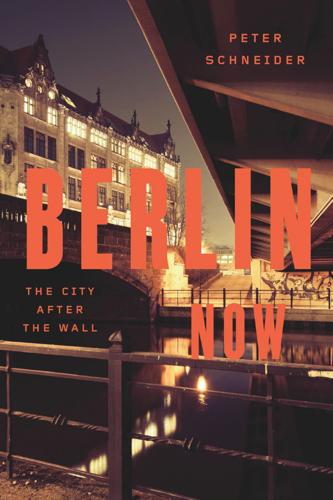
Berlin Now: The City After the Wall
by
Peter Schneider
and
Sophie Schlondorff
Published 4 Aug 2014
Under no circumstances had I wanted to act the part of the arrogant “Wessi,” who forces his hosts in East Berlin to see that they live in a condemned state. Any such impulses were reliably held in check by the bottle of whiskey we always immediately broke open. Living in Prenzlauer Berg in the 1980s was a credo of sorts. Prenzlauer Berg was one of the few neighborhoods that had barely been damaged in the war. Eighty percent of its buildings—mostly six-story residential structures with apartments without individual bathrooms and a communal toilet on the landing—had survived largely unscathed. The communist regime had dispossessed the vast majority of private owners.
…
There they found apartments that, even though they had lower ceilings, featured bathrooms, toilets, central heating, and television outlets. Those who stayed behind in Prenzlauer Berg were people who didn’t particularly care about the living standards in the Plattenbauten—or rather, who didn’t mind the shortcomings of the old apartments: writers, artists, intellectuals, contrarians, adventurers—people leading every kind of precarious existence. And that was how Prenzlauer Berg turned into a sort of habitat for nonconformists, whom Mielke’s “company” suspected of being dissidents. Indeed, almost all protests in East Berlin—against the escalation of the arms race, the militarization of kindergartens, and the East German Communist Party’s election fraud, which finally led to the great rally of November 4, 1989—began at the Gethsemane Church in Prenzlauer Berg.
…
Indeed, almost all protests in East Berlin—against the escalation of the arms race, the militarization of kindergartens, and the East German Communist Party’s election fraud, which finally led to the great rally of November 4, 1989—began at the Gethsemane Church in Prenzlauer Berg. One of the last holdouts in Prenzlauer Berg today is the literary historian Wolfgang Thierse, a former member of the civil rights movement and of the New Forum. In January 1990, he joined the SPD and became the first chairman of the East SPD. In 1998, he became president of the German Bundestag and, in 2005, its vice president—an office he holds to this day.
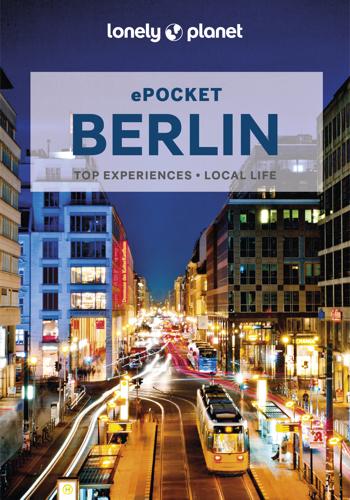
Pocket Berlin
by
Andrea Schulte-Peevers
Published 15 Mar 2023
b Hackescher Markt (S5, S7, S75) and Oranienburger Strasse (S1, S2, S25) stations are both good jumping-off points. j M1 runs from Museumsinsel (Museum Island) to Prenzlauer Berg and stops throughout the Scheunenviertel. Top ExperienceTrace History at the Gedenkstätte Berliner Mauer For an insightful primer on the Berlin Wall, visit this 1.4km-long outdoor memorial, which explains the physical layout of the barrier and the death strip, how the border fortifications were enlarged and perfected over time, and what impact they had on the daily lives of people on both sides. The exhibit follows Bernauer Strasse to Prenzlauer Berg, which was once divided by the Wall. CSP/SHUTTERSTOCK © map Google map Berlin Wall Memorial www.berliner-mauer-gedenkstaette.de yTop Tips AStart your visit in the visitors centre across from Nordbahnhof S-Bahn station and work your way east.
…
Although the presence of pro vendors has grown, there are still plenty of regular folks here to unload their spring-cleaning detritus at bargain prices. 7Good Buy Store CONCEPT STORE map Google map Conscious purchasing is at the heart of this concept store that only puts products by sustainable, nonprofit and fair-trade labels on its shelves and racks. Pick up festival confetti made from seeds, toothpaste with vitamin B12, beeswax wraps and other goodies not found in your high street shop. (www.goodbuy.eu) Prenzlauer Berg Splendidly well-groomed Prenzlauer Berg is one of Berlin’s most charismatic residential neighbourhoods, filled with cafes, historic buildings and indie boutiques. Its ample charms are best experienced on a leisurely daytime meander around hubs such as Kollwitzplatz, Kastanienallee and Stargarder Strasse. On Sunday the world descends on Mauerpark for its sprawling flea market, karaoke and chilling.
…
Contents Plan Your Trip Welcome to Berlin Berlin’s Top Experiences Dining Out Bar Open Treasure Hunt Museums Architecture Historical Sites Art Tours LGBTIQ+ Responsible Travel Under the Radar For Kids Four Perfect Days Need to Know Berlin Neighbourhoods Explore Berlin Reichstag & Unter den Linden Museum Island & Alexanderplatz Potsdamer Platz Hackescher Markt & Scheunenviertel Kurfürstendamm & City West Kreuzberg Neukölln Friedrichshain Prenzlauer Berg Worth a Trip Jüdisches Museum Schloss Charlottenburg Schloss & Park Sanssouci Survival Guide Survival Guide Before You Go Arriving in Berlin Getting Around Essential Information Language Behind the Scenes Our Writer Welcome to Berlin Berlin is a bon vivant, passionately feasting on the smorgasbord of life.
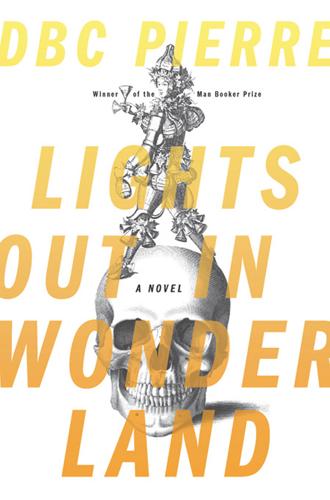
Lights Out in Wonderland
by
Dbc Pierre
Published 1 Sep 2010
We hunch smoking, watching shadows play among the trees. “Is this still Prenzlauer Berg?” I eventually ask. “No, Mitte,” says the craggy man. “Though it depends what you’re thinking, because if you mean the Prenzlauer Berg of the famous Berlin Wall, then this is still considered it.” He raises his beer and points across the park: “A couple of blocks down is the wall. Those buildings at the edge were only for Stasi agents and other trusted officials. They could see the West from their apartments.” “But if it’s old Prenzlauer Berg you’re looking for,” says the comrade, “you’re a few years too late.
…
Frederick was a mouse who saved up colors in summer; then, in winter, when fellow mice only had gray things to think about, he recited back all the colors he’d saved. At the end the mice rejoiced, saying: “Frederick, Du bist ja ein Dichter! You’re a poet!” I knew Frederick was me. I even looked like him. I used to pull up a chair in front of our bullet-holed building in Prenzlauer Berg, climb on top, and tell poems. I never looked at anyone, I hid behind the rhymes. But I always began my readings as Frederick did: “Ihr lieben Mäusegesichter—my lovely mouse-faces.” East Berlin after the collapse of communism was like a kindergarten sandbox. Nobody knew who owned anything, nobody needed money or permission for their projects, all they needed was a beanbag chair, some wistful music, or a watering can with an eyeball painted on it.
…
The man stays hunched at the door, as if we might best abandon the mission. I’m not too put off by this; he’s from a generation retired from clubbing, and realistically, in a city riddled with venues, I allow for the Pego to have moved since the early nineties, even to have changed its name. For now I direct the driver to my old stomping ground, Prenzlauer Berg, home of the original Pego Club. Once nuzzling the Berlin Wall, this area’s stark decrepitude was a beacon that brought adventurers flocking after the German Democratic Republic collapsed in 1990, around the time I toddled into town. Postapocalyptic grunge became the cradle for a club scene still famous today, and still owing its spirit and style to the no-man’s-land between East and West, between past and future.
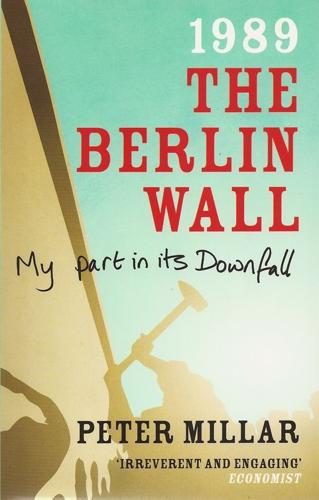
1989 The Berlin Wall: My Part in Its Downfall
by
Peter Millar
Published 1 Oct 2009
My flat was on the first floor of a typical block on Schönhauser Allee, a broad thoroughfare that ran north-south, just a few hundred metres east of the Wall, and would have been described as ‘leafy’ were the trees not permanently caked in the dirt of diesel exhaust and the residue from the cheap, environmentally unfriendly but plentiful lignite brown-coal used in the power plants that provided heating. This was the heart of Prenzlauer Berg, a gritty working-class inner-city suburb. Today it is the bustling, Bohemian heart of trendy Berlin, alive with restaurants and nightlife. Not even in my most exotic fantasies could I have imagined that just two decades ago. On the ground floor, just below the flat there was a bar called Wörther Eck (Wörther Corner), because it was on the corner of Wörther Strasse.
…
He told her to drive to the end of the street and pull in. It was my turn. And I have to admit I am forever grateful to that young Ghanaian woman. I didn’t get stuck in the tram tracks and I didn’t nearly kill any young comrades. After half an hour of blissfully uneventful pootering along the cobbles of Prenzlauer Berg, I pulled up back in front of the School of Motoring building and was told I had passed. The Ghanaian girl shrugged and went off to prepare for a brave seventh attempt. I sometimes wonder if she ever made it. My prize was a little grey plastic-coated booklet embossed with the ‘hammer and compasses’ coat of arms of the German Democratic Republic and the word Führerschein on the front.
…
It was a reminder to me that hers was a generation of Germans for whom freedom of expression was a luxury to be enjoyed only in private. That was why membership of the Stammtisch inner circle was such a privilege. She and Alex had got together almost by accident. His family had come to Berlin as refugees when Danzig was given to Poland and the German population expelled. His parents found a billet amidst the ruins of the Prenzlauer Berg district for themselves, Alex and his sister Renate. Young Alex, in search of a way to contribute to the stretched family budget, signed up on a course to learn hairdressing. As an older teenager he went to see his older brother Norbert who on his return from the war had settled in one of the Western provinces.
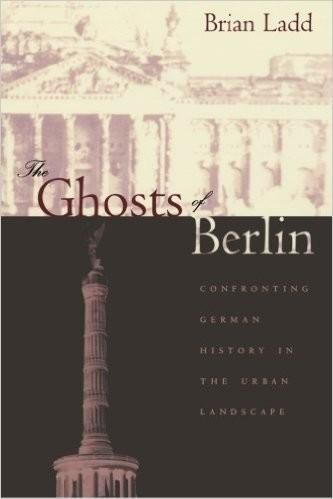
The Ghosts of Berlin: Confronting German History in the Urban Landscape
by
Brian Ladd
Published 1 Jan 1997
Its architectural showcase of that decade, the International Building Exhibition (Internationale Bauausstellung, or IBA), both rehabilitated old buildings and designed new ones to complement the attractions of the old tenement blocks. In East Berlin, too, the old tenements became refuges for society's dropouts. Prenzlauer Berg, the most intact tenement district in the East, became the center of the German Democratic Republic's small and harassed alternative scene. The men and women who decided not to play by the rulesa much costlier decision in the Eastfound their niches of freedom and individuality in Prenzlauer Berg's tenements, where apartments were relatively easy to get because many had been abandoned after the decades of utter neglect the buildings had suffered.
…
Its grandest project was the renovation of both sides of a one-block stretch of Husemannstrasse in the middle of Prenzlauer Berg. It renovated the ornate facades, decorated the street with old-fashioned street lamps and water pumps, and opened cafés with period decor as well as museums catering to tourists, including the popular Museum of Hairdressing. For Berlin's 750th anniversary in 1987, the East Berlin government unveiled this block as the reconstruction of a typical Berlin workers' quarter from the turn of the century. For residents of Prenzlauer Berg, and for visitors who passed through streets lined with crumbling buildings to get there, it was a peculiar if not a galling sight.
…
For residents of Prenzlauer Berg, and for visitors who passed through streets lined with crumbling buildings to get there, it was a peculiar if not a galling sight. And the East Berlin planners obviously shared the common misconception that the Mietskaserne had been a working-class ghetto. Unlike many parts of Prenzlauer Berg, the grand facades of the Husemannstrasse had been built for bourgeois apartments. This "typical workers' street" only became a workers' street when the East German workers' state decreed its kitschy (and shoddy) renovation. (In the 1990s, however, it became the center of Prenzlauer Berg's hopping night life.) After reunification, it was no surprise that city planners dedicated themselves to reinvigorating the old tenement neighborhoods.

Behind the Berlin Wall: East Germany and the Frontiers of Power
by
Patrick Major
Published 5 Nov 2009
The party did not help me to get a trip west, and so I don’t have any time for the party.’⁹¹ The FDGB trade union was generally even more prone to ‘going native’ than the party. On 13 August several union leaders apparently applied for leave or stayed at home.⁹² Although most full-time functionaries remained firm under pressure, part-time officials were less steadfast. In 20 enterprises in Berlin-Prenzlauer Berg, especially semi-state and locally organized plants, the FDGB noted that even shop-floor chairmen disowned the measures.⁹³ IG Printing and Paper came in for particular criticism for ‘opportunism’, as well as local health sector shop stewards.⁹⁴ Among the unions’ voluntary workers the mood was even more despondent.
…
One liaison officer at the Warnow shipyard complained that ‘the government itself has made a mockery of the trust of the population and can no longer use the excuse—when difficulties arise—that spies are to blame’. Another simply told the government to ‘kiss my . . . ’.⁹⁵ In one branch meeting in Prenzlauer Berg only two members actually stood by the measures, while others muttered that Sunday the thirteenth had revealed ‘a lot of little Ulbrichts among us’.⁹⁶ All of this would suggest that many party members shared a widespread resentment that 13 August had infringed their own private sphere or threatened to undermine the modus vivendi with local clienteles. ⁸⁷ SED-BL Potsdam to Honecker, 19 Aug. 1961, BLHA, Bez.
…
Relatively speaking, members of the Writers’ Association did indeed enjoy a privileged existence, which militated against dissidence.¹⁴³ The right to travel could be dangled as a carrot before potential malcontents, such as the fictional pseudo-intellectual W. in Hilbig’s ‘I’ , whose Stasi case officers manipulate his desire to see the West: ‘To stay or not to stay, that was the question.’¹⁴⁴ As will become evident below, a significant number of the Prenzlauer Berg set, including Anderson, were spirited out of the country, sometimes by mutual consent. Literature could, on the other hand, provide a coded medium for veiled criticism. By its very nature, the Wall conjured up taboo, ‘the fairy tale mechanism and psychology of the forbidden door or the forbidden box that should not be opened’.¹⁴⁵ The border offered an almost irresistible set of metaphors which the Ministry of Culture had to censor or let pass.
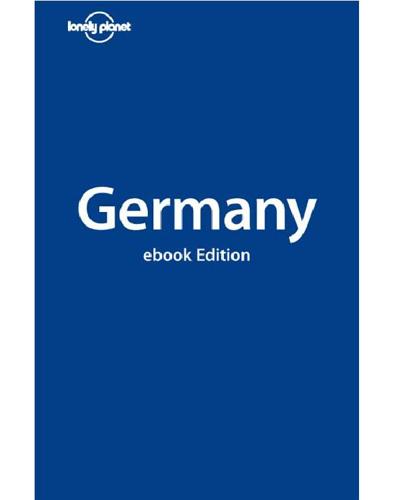
Germany
by
Andrea Schulte-Peevers
Published 17 Oct 2010
Return to beginning of chapter Berlin * * * HISTORY ORIENTATION Maps INFORMATION Bookshops Discount Cards Emergency Internet Access Internet Resources Left Luggage Media Medical Services Money Post Tourist Information SIGHTS Mitte Potsdamer Platz & Tiergarten Kreuzberg Friedrichshain Prenzlauer Berg Charlottenburg Southwestern Berlin Eastern Berlin ACTIVITIES Cycling Running Swimming WALKING TOUR BERLIN FOR CHILDREN TOURS Bus Tours Bike Tours Boat Tours Walking Tours Speciality Tours FESTIVALS & EVENTS SLEEPING Mitte Prenzlauer Berg Potsdamer Platz & Tiergarten Kreuzberg Friedrichshain Charlottenburg EATING Mitte Prenzlauer Berg Potsdamer Platz & Tiergarten Kreuzberg Friedrichshain Charlottenburg Schöneberg DRINKING Mitte Prenzlauer Berg Potsdamer Platz & Tiergarten Kreuzberg & Kreuzkölln Friedrichshain Charlottenburg & Schöneberg ENTERTAINMENT Listings Tickets Nightclubs Live Music Cabaret & Varieté Cinemas Theatre Sport SHOPPING Department Stores & Malls Farmers Markets Flea Markets Made in Berlin Music GETTING THERE & AWAY Air Bus Car & Motorcycle Train GETTING AROUND To/From the Airports Car & Motorcycle Public Transport Taxi * * * ‘Berlin is the newest city I have come across’, observed Mark Twain in 1891, and a modern-day visitor to the German capital might well echo the sentiment.
…
Pockets of open space include the Volkspark Friedrichshain (Map), a wonderland of tamed wilderness filled with trails, playgrounds, tennis courts, a half-pipe, an outdoor cinema and lots of greenery for sunning, grilling and picnicking. Return to beginning of chapter Prenzlauer Berg Ageing divas know that a face-lift can quickly pump up a drooping career, and it seems the same can be done with entire neighbourhoods. It helps that Prenzlauer Berg has always had great bone structure, so to speak. Badly pummelled but not destroyed during WWII, the district was among the first to show up in the crosshairs of developers after the Wall collapsed. Now pretty as a polished penny, its townhouses sparkle in prim pastels, their sleekly renovated apartments and lofts the haunts of urbanites, gays, creative types, families and professionals.
…
Plenty of options have been popping up lately, but these are our favourites: Brilliant Apartments ( 8061 4796; www.brilliant-apartments.de; apt €80-120; ) The name is the game in these eight stylish and modern units with full kitchens that sleep up to six and are located on Oderberger Strasse and Rykestrasse, both hip drags in Prenzlauer Berg that put you close to everything. Miniloft Berlin (Map; 847 1090; www.miniloft.de; Hessische Strasse 5; apt from €105) Fourteen architect-designed lofts in an energy-efficient building, some with south-facing panorama windows, others with cosy alcoves, all outfitted with modern designer furniture and kitchenettes. T&C Apartments (Map; 405 046 612; www.tc-apartments-berlin.de; Kopenhagener Strasse 72; apt from €50) Huge selection of stylish, hand-picked one- to four-room apartments in Mitte, Prenzlauer Berg, Tiergarten and Schöneberg; headquarters located in Prenzlauer Berg
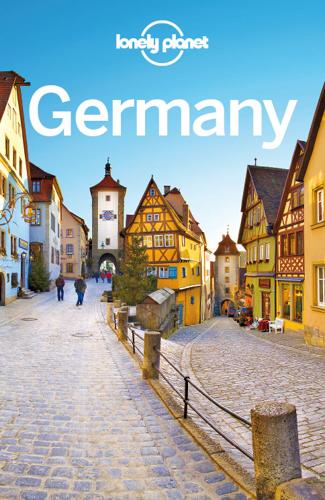
Germany Travel Guide
by
Lonely Planet
Computerspielemuseum MUSEUM Offline map Google map (6098 8577; www.computerspielemuseum.de; Karl-Marx-Allee 93a; adult/concession €8/5; 10am-8pm Wed-Mon; Weberwiese) No matter if you grew up with PacMan, World of Warcraft or nothing at all in this digital world, this delightful museum takes you on a fascinating trip down computer-game memory lane while putting the industry’s evolution into historical and cultural context. Colourful and engaging, it features lots of interactive stations alongside hundreds of original exhibits, including an ultrarare 1972 Pong arcade machine and its twisted modern cousin, the ‘PainStation’. PRENZLAUER BERG Prenzlauer Berg went from rags to riches after reunification to emerge as one of Berlin’s most desirable residential neighbourhoods. Its ample charms are best experienced on a leisurely meander. Look up at gorgeously restored town houses, comb side streets for indie boutiques or carve out a spot among the yoga mamas and greying hipsters in cafes around Kollwitzplatz or Helmholtzplatz, two squares at the epicente of gentrification.
…
Zum Schmutzigen Hobby Offline map Google map (www.ninaqueer.com; Revaler Strasse 99, RAW Tempel, gate 2; Warschauer Strasse, Warschauer Strasse) Berlin’s trash-drag deity Nina Queer has flown her long-time Prenzlauer Berg coop and reopened her louche den of kitsch and glam in less hostile environs amid the Friedrichshain kool kids. Wednesday’s Glamour Trivia Quiz is legendary. Marietta Offline map Google map 4372 0646; www.marietta-bar.de; Stargarder Strasse 13; from 10am; Schönhauser Allee, M1, Schönhauser Allee) Retro is now at this Prenzlauer Berg self-service retreat, where you can check out passing eye candy through the big window or lug your beverage to the dimly lit back room for quiet bantering.
…
RENTAL APARTMENTS For self-caterers, independent types, wallet-watchers, families and anyone in need of plenty of privacy, a short-term furnished-flat rental may well be the cat’s pyjamas. Plenty of options have been popping up lately, but these are our favourites: Brilliant Apartments Offline map Google map (8061 4796; www.brilliant-apartments.de; Prenzlauer Berg; apt from €84; ; Eberswalder Strasse) The name is the game in these 11 stylish and modern units with full kitchens that sleep from one to six people and are located on Oderberger Strasse and Rykestrasse, both hip drags in Prenzlauer Berg that put you close to everything. Miniloft Berlin Offline map Google map (847 1090; www.miniloft.com; Hessische Strasse 5, Scheunenviertel; apt from €138; ; Naturkundemuseum) Architect-designed lofts in an energy-efficient building, some with south-facing panorama windows, others with cosy alcoves, all outfitted with modern designer furniture and kitchenettes.
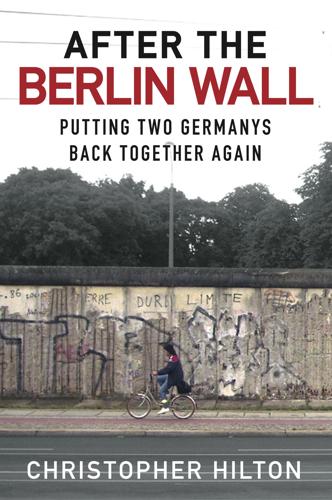
After the Berlin Wall
by
Christopher Hilton
Published 15 Dec 2011
The number of districts is misleading in terms of who really got what, because some were large and others, particularly in the city centre, small. In reality, the Soviet Union was taking slightly less than half of the whole city. For the record, the districts were: Soviet – Pankow, Weissensee, Lichtenberg, Köpenick, Treptow, Prenzlauer Berg, Friedrichshain and Mitte; French – Reinickendorf, Wedding; British – Spandau, Wilmersdorf, Charlottenburg, Tiergarten; American – Zehlendorf, Steglitz, Tempelhof, Schöneberg, Neukölln, Kreuzberg. 4. The Wall’s height meant that you couldn’t really see over it except if you lived in high-rise apartments or, distantly, from certain places on the S-Bahn.
…
Yes, it was difficult in the GDR but my family is a “minister” family – my father was a minister, my mother taught religion but only within the congregation, not in schools, of course.’ What do you think now, the twentieth anniversary approaching so quickly? ‘My family and I think it was a huge slice of luck that there was the Wende. I was twenty-one when The Wall came down and I took part in the demonstrations at the Gethsemane Church [in Prenzlauer Berg].21 It wasn’t difficult for me to lead a normal life after, although I had never been to Western countries. I’d been to Hungary and so on. I was educated not by school but my family so I knew about places like Hamburg even though I’d never been. Through my parents I also knew the political systems both in the East and the West.
…
These twenty-two were divided to different extents, as the table shows. P = Protestant, C = Catholic, F = French Reformed, R = Reformed Bohemian. Church / Congregation Place District Heiligensee congregation (P) Heiligensee Martin-Luther congregation (P) Pankow / Wedding St Augustinus (C) Dänenstrasse Prenzlauer Berg / Wedding St Sebastian (C) Gartenplatz Wedding Versöhnungskirche (P) Bernauer Strasse Mitte / Wedding Golgotha congregation Gartenstrasse Gnaden congregation (P) Invalidenpark Dankeskirche congregation (P) West Dreifaltigkeit (P) Mauerstrasse Liusenstadtkirche (F) Kommandantenstr.

Central Europe Travel Guide
by
Lonely Planet
Fuckparade DANCE EVENT (www.fuckparade.org) Each August this anti-establishment, antigentrification demonstration dances to its own noncommercial techno beat. Sleeping Berlin’s independent hostels are far superior to the standard DJH (www.jugendherberge.de) locations in town. MITTE & PRENZLAUER BERG Lette’m Sleep HOSTEL € ( 4473 3623; www.backpackers.de; Lettestrasse 7; dm from €11, tw without bathroom from €49, apt from €69; ; Eberswalder Strasse) Located within stumbling distance of the Prenzlauer Berg nightlife action, this colourful and convenient party hostel is simply groovy, baby, groovy. Roof APARTMENT €€ ( 6951 8833; www.roof-berlin.com; studio/1-bed apt €85/115, reduced rates after 3 nights; ) Proprietor Ariane has two studios and a one-bedroom apartment – all tastefully decorated in soothing colours with comfy, contemporary touches – peppered around central Prenslauer Berg.
…
Back on the mainland, Lübeck is a 12th-century, Unesco-recognised townscape of medieval merchants’ houses and towers that is well worth a stopover. Save at least three days – and nights – for the rich history, museums, bars and clubs of Berlin . The Brandenburg Gate, Holocaust Memorial and East Side Gallery at the Berlin Wall are must-sees. In the evening you have your choice of subdued-but-happening nightlife in Prenzlauer Berg, the hipster havens in Friedrichshain or alternative clubs in slightly grungy Kreuzberg. Entering Poland, make the Old Town of Poznań, where the lively university population keeps the ancient centre buzzing, the first overnight stop. Two days in the impressively Gothic, church-filled Toruń has a much slower pace.
…
Potsdamer Platz and its shiny Sony Center hosts Berlin’s star-studded film festival each year, a stone’s throw from where only 20 years ago you could climb up a viewing platform in the West and peer over the wall to glimpse the alternate reality of the East. Casually strolling along Bernauerstrasse near trendy Prenzlauer Berg, you suddenly place your foot on a brick-marked line in the pavement marking where the wall once stood. Renowned for its diversity and its tolerance, its alternative culture and its night-owl stamina, the best thing about the German capital is the way it reinvents itself and isn’t shackled by its mind-numbing history.

Perfection
by
Vincenzo Latronico
Published 18 Mar 2025
The Google Translate German patchily memorized whenever they were confronted with the city’s realities: Kurzstrecke. Krankenkasse. Rohrreinigungsspirale. Vorderhaus. Steuernummer. Ich hätte gerne. Steuer-ID. Schlüsseldienst. An die Ecke. Schwangerschaftsverhütungsmittel. Vielleicht. Ebenso. The warehouse parties. The house parties at Jugendstil apartments in Prenzlauer Berg with bay windows and period moldings. Berghain. The gallery parties. The barge parties on the Spree. The blurry journeys home on the U-Bahn, which ran all night. Visionäre. Renate. The illegal parties in Wedding sought but never found, when they would wander from one abandoned warehouse to the next, clinging to an SMS message containing directions.
…
Since they couldn’t earn any more for their work, they would have to do more of it. They gave themselves a year to increase their income enough to secure the space they wanted. After putting in a few pitches for jobs they clearly had no interest in, they were finally hired to come up with a new visual concept for a chain of hotels in and around Friedrichshain and Prenzlauer Berg—logo, web presence, brochures, bar and restaurant menus, dishware, linen, loyalty program. It was a lot of work. It was exactly what they were looking for. For months all they did was work. They ordered in noodles or falafels from local restaurants and ate them at their computers. They turned down all but a few invitations and were greeted like long-lost castaways when they did treat themselves to a gallery opening, usually on their way to or from a construction site or a meeting at their client’s HQ to go over paper stock samples.

The Collapse: The Accidental Opening of the Berlin Wall
by
Mary Elise Sarotte
Published 6 Oct 2014
It was near Schönhauser Allee, a major access road to downtown. It could easily be reached with public transport. Bornholmer also stood near the Prenzlauer Berg residential district of East Berlin, where large numbers of “hostile-negative forces”—such as Aram Radomski and Siggi Schefke—lived.18 On the evening of November 9, those two “hostile negatives” were indeed heading to the border crossing. Radomski had watched Schabowski’s press conference live at his girlfriend’s place on Metzer Street in Prenzlauer Berg. After the opening minutes, she had found it so tedious that she had wandered away. Radomski, however, had kept watching.
…
Instead of searching for her, however, Radomski realized that something had changed. He was now filled with a sense of rage, and what he most wanted was not his “princess,” whom he never saw again, but payback.66 Radomski drifted from location to location over the following years, but his desire for revenge would eventually lead him to the Prenzlauer Berg neighborhood of East Berlin, the only place in the GDR where he figured he had a chance of finding like-minded souls. There, Radomski indeed found a number of them, most important among them Siegbert Schefke, known to all as Siggi. They became friends and even held a joint birthday party one year.
…
See under Nikolai Church (Leipzig) Peaceful Revolution of 1989, 75, 76, 82, 95, 103, 179 discounting of, by academics, 177 and Leipzig trade fairs, media coverage of, 33–34, 57 media coverage/publicity and, 33–34, 181 motivation for rise of, xxiv–xxv, xxv–xxvi party incompetence and, 160 and Stasi files, destruction of, 172 trust and, 180–181 Penzlauer Berg, 133 People’s Army, 22, 159 People’s Liberation Army (China), 43 People’s Police, 10, 51 People’s Republic of China (PRC) and East Germany, comparison with, 178–179 fortieth anniversary of founding of, 43–44 Tiananmen Square massacre and, 43–44, 46, 47, 53, 54, 88, 178 Poland, 171, 172 and announcement of travel law, reaction to, 122–123 number of secret police in, 9 Solidarity in, xxi, xxiv, 16, 22–23, 39 Solidarity in, and Gorbachev’s reforms, effect of, 22–23 Police, 43 draftees as riot, 54–55 People’s Police, 10, 51 secret police, 9 See also Armed forces Police brutality, stories/written testimonies about, 86 Political opposition, legalization of, instructions to ignore, 19 Political prisoners, 16 “Political undesirables,” Stasi lists of, 51 Pommer, Dietmar, 16 Poppe, Ulrike, 62 Prague, 27–30, 94–95, 99 PRC. See People’s Republic of China Prenzlauer Berg (East Berlin), 60 Press conference (East Berlin, November 9), on travel law, Schabowski’s announcement of, 113 (photo), 114–119, 127–128, 159, 179, 184 reaction to, 119–124 Protestant Reformation, 33 Protests/demonstrations in Dresden, 32 in East Berlin, November 4, 95–96 in Leipzig (see Leipzig protests/demonstrations) See also Dissidents/activists Putin, Vladimir, 10, 30, 176–177 Radomski, Aram, xxiv, 56–57, 59–60, 61, 62–66, 75 at Bornholmer Street border crossing, 133–134, 138, 139, 141–143 at Cuckoo’s Egg (bar in West Berlin) to celebrate Berlin Wall opening, 152–153 fate of, after German reunification, 176 and Leipzig ring road march (October 9), secret filming of, 77–81 “let-off-steam solution” (permanent expulsion from East Germany) and, 141–142, 144 at November 4 demonstration (East Berlin), 96 Schabowski’s press conference and, 133 in West Berlin, 142–143 Rähder, Gisela, 54 Rähder, Wolfgang, 54 Rau, Albrecht, 124 Reagan, Ronald, 121 Gorbachev and, xix, xxii “Mr.

Beyond the Wall: East Germany, 1949-1990
by
Katja Hoyer
Published 5 Apr 2023
Pressure from the church communities on the regime intensified and so Schmutzler was released from prison early, in 1961, and resumed his activities as a pastor in Dresden before becoming a lecturer at the Theological Seminary in Leipzig. In the 1980s he moved to West Berlin where he died in 2003. Cases like his prove that even the first constitution, which looked democratic, provided only an illusion of civil rights and basic freedoms. Consolidation of Power Berlin-Prenzlauer Berg, 25 July 1950. Walter Ulbricht was letting the thunderous applause of his comrades wash over him. He had celebrated his fifty-seventh birthday a few days earlier and now stood on the stage of the Werner-Seelenbinder-Halle, a venue in the north-east of Berlin. It had only just been converted from its previous function as a cattle market on the grounds of an abattoir.
…
Mielke’s agents reported after the election that ‘election watch’ had indeed been a widespread undertaking: Members of so-called grassroots church groups and applicants for permanent leave were recognized … in the polling stations. In relation to the capital such persons were noted in Berlin-Prenzlauer Berg in sixty-four polling stations, in Berlin-Friedrichshain in forty-four polling stations, in Berlin-Mitte in twenty-three polling stations. These persons usually made notes about the election results announced by the electoral officials.37 According to these reports from Berlin, 10 to 20 per cent of the votes cast were votes against the list of candidates of the National Front, which meant that voters went into the booth rather than folding their paper and putting it into the ballot box straight away.
…
48 Andreas was excited about the news, but it was a Thursday and he had to be back at the famous Babylon cinema the next day, where he worked as a technician. He decided to go and investigate the matter at the weekend, taking DM100 and a map of West Berlin from his mother’s flat before he went home to the Prenzlauer Berg area. There, he turned on his TV to see what the West German broadcaster ZDF had to say on the evening’s events but found to his disappointment that they had a football match on. At 10.40 p.m., the news programme finally announced: ‘East Berlin has opened the Wall.’ The accompanying footage showed bustling crowds of Berliners at several border crossing points.
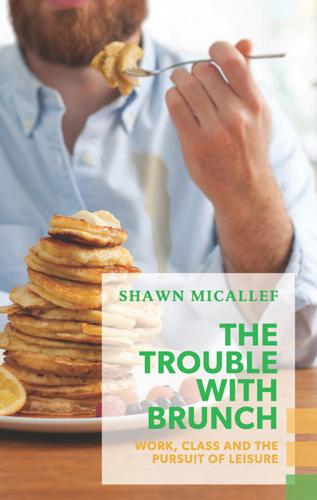
The Trouble With Brunch: Work, Class and the Pursuit of Leisure
by
Shawn Micallef
Published 10 Jun 2014
With the Wallpaper guide in hand, we left Recoleta, the downtown neighbourhood our hotel was in, and started out on the hour-long walk to the Palermo Soho neighbourhood, touted in the guide and elsewhere as the trendiest, most fashionable and chic part of the city – Buenos Aires’ answer to Williamsburg or Prenzlauer Berg. Buenos Aires likes to take Sunday off, so there wasn’t much happening as we walked the low-rise commercial and residential streets of Palermo, the artisan shops and unique boutiques listed in the guide closed for the day. Though we began to wonder if we were lost, this is what I had hoped for – a city unfolding in front of us as we wandered.
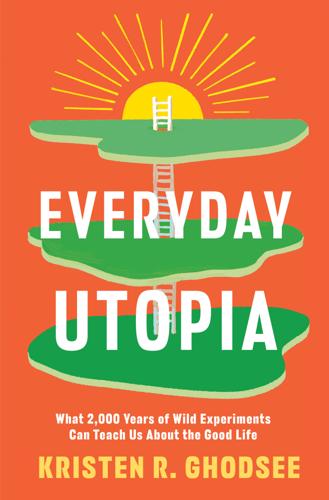
Everyday Utopia: What 2,000 Years of Wild Experiments Can Teach Us About the Good Life
by
Kristen R. Ghodsee
Published 16 May 2023
Vladimir Lenin would later describe Bebel as “the most gifted parliamentarian in Europe, the most talented organiser and tactician, the most influential leader of international Social-Democracy.”17 Germans called him the “king of the workers” and many families hung his framed portrait in their homes.18 Figure 7.1. A street art portrait of August Bebel in Prenzlauer Berg, Berlin, in 2019. In 1871, the German government imprisoned Bebel for high treason, and he spent his four-year sentence writing and reading a wide variety of books, including Plato’s Republic, Thomas More’s Utopia, and a history of Thomas Müntzer and the German Peasants’ War.19 Inspired by his study of “French socialistic and communistic Utopias,”20 Bebel wrote a book that would change the course of history.
…
The Sabbathday Lake Shaker Village closed for COVID-19 (Author’s Photo) Figure 5.2. 1880 drawing of the Shaker Village at Sabbathday Lake (Library of Congress) Figure 5.3. Free book exchange in Pennsylvania (Author’s Photo) Figure 6.1. My parents’ first wedding day (Author’s photo) Figure 6.2. My nuclear family in 1974 (Author’s photo) Figure 7.1. A street art portrait of August Bebel in Prenzlauer Berg, Berlin, in 2019 (Author’s photo) Simon & Schuster 1230 Avenue of the Americas New York, NY 10020 www.SimonandSchuster.com Copyright © 2023 by Kristen R. Ghodsee All rights reserved, including the right to reproduce this book or portions thereof in any form whatsoever. For information, address Simon & Schuster Subsidiary Rights Department, 1230 Avenue of the Americas, New York, NY 10020.

Active Measures: The Secret History of Disinformation and Political Warfare
by
Thomas Rid
I knew I was a suspicious West German to Kopp (he would immediately place my accent). Worse, he knew that I was coming in from London, that old den of spy intrigue. I needed to break the ice. He offered me coffee in his modest living room. I told him that I had studied at Humboldt, and that I used to live in Prenzlauer Berg in East Berlin, a neighborhood now known as the Brooklyn of Berlin. He wanted to know what street. Immanuelkirchstraße, I told him, and said I remembered carrying up heavy tin buckets full of coal briquettes to make a fire in the morning, and that we showered in a tiny plastic box in the kitchen, warming our cold hands over the gas stove.
…
“They confirmed their opinion.”6 Just five months earlier, Michel Foucault delivered his landmark inaugural lecture, “The Order of Discourse,” at the Collège de France. The iconic French philosopher and social critic considered “the opposition between true and false” as a long-established, power-wielding system of exclusion that he now revealed for what it was: historical, arbitrary, modifiable, and violent.7 I had been reading Foucault in Prenzlauer Berg in the mid-1990s, and after my conversation with Kopp in Brandenburg, I recalled some of what I’d read. Foucault was breaking down the barrier between analytical truth and ideological truth; so were Agayants and Wagenbreth. Could this eerie convergence of Eastern spycraft and Western thought really be just a coincidence?
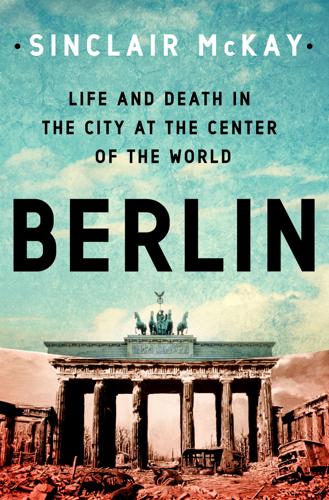
Berlin: Life and Death in the City at the Center of the World
by
Sinclair McKay
Published 22 Aug 2022
Eighteen-year-old Brigitte Eicke had slightly more elevated tastes though: from 1943, when she was taken on an outing with the League of German Girls to a production of Madame Butterfly, she had an ear for opera.17 Frau Eicke lived with her mother in the north-east of the city, in a working-class suburb called Prenzlauer Berg. Her father, who had once been a pig farmer, had died in 1939. Now the teenager, having assiduously studied shorthand, was working in the offices of a firm called Koster.18 Life for the last few months had been filled with fear by the night-time sirens, and with relief by the greetings to surviving neighbours the following day; yet even though the landscape of her childhood city was being violently deconstructed around her, with every possibility that one of those bombs or incendiaries might finish her, Frau Eicke somehow held on to some tokens of quotidian normality.
…
See also individual publication name Newton, Isaac New York City Ballet Niederwallstrasse Niemöller, Martin ‘Night of the Long Knives’ (1934) NKVD Nobel Institute Nobel Prize Nolde, Emil Nordhafen Norkus, Herbert NSDAP see Nazi Party Nuremberg laws Nuremberg rallies Nuremberg Trials obedience, crime of excessive Oberbaum Bridge Oberstdorf Oder, River Oels estate Office of Strategic Services (OSS) Old Shatterhand Omankowsky, Manfred OPEC oil crisis (1973) openness, Berlin’s reputation for opera Operation Gold (1954) Oranienburg concentration camp Oranienburger Strasse Oranienburger synagogue Orbach, Lothar Orff, Carl: Carmina Burana Organization Consul Organization for Sport and Technics Orgel, Kurt Osram Ostmark Ostpolitik Palestine Pankow Panzerfaust Papen Circle Papen, Franz von Paragraph (German judicial code) Paris Commune (1871) Peek and Cloppenburg Peet, John People’s Court People’s Hall People’s Police Peters, Eva Pfeiffer-Bothner, Dr Hans Günther Pfeiffer, Dieter Pharus Halls physics pink persico Planck, Erwin Planck, Max Poelzig, Hans Poland Potsdam Potsdam Conference (1945) Potsdamer Platz poverty Prenzlauer Berg presidential election, German (1932) Presley, Elvis Prinzenallee Prinz Heinrich Gymnasium Prinzregentenstrasse prisoners-of-war: concentration camps and see concentration camps; forced labour and see forced labour; German; Soviet; Soviet sector and political Professor Mamlock (film) prostitution Protocols of the Elders of Zion, The Prussia Prussian State Library Psychological Strategy Board, US pulp fiction punk rock Purper, Liselotte quantum physics racism radio stations.
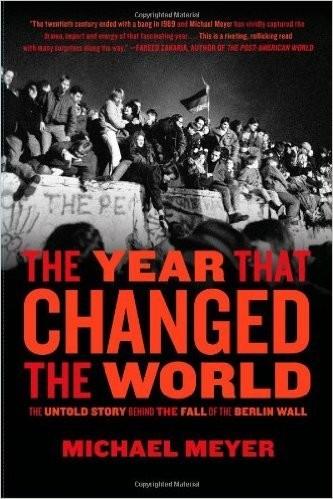
The Year That Changed the World: The Untold Story Behind the Fall of the Berlin Wall
by
Michael Meyer
Published 7 Sep 2009
How dare they, on this of all days? “He gave orders to beat them,” Schabowski said. I had arrived from Budapest that afternoon, too late for the official celebrations. The center of Berlin, near Honecker’s ministries, was empty of life. But some blocks to the north, in the gritty working-class neighborhood of Prenzlauer Berg, young people were gathering in the thousands. At Gethsemane Church in Schonhauser Allee, known as the “rebel church” because of its support for the suddenly growing East German protest movement, so many people had come to debate the political situation that I could hardly wedge inside. In the surrounding streets, in windows and along tramlines, people held lit candles.
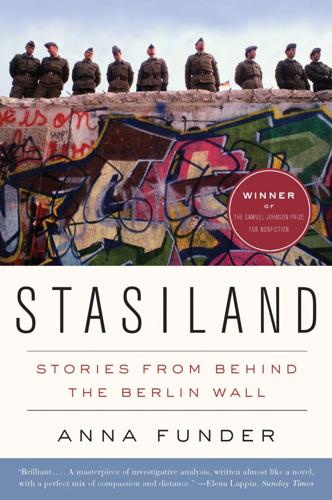
Stasiland: Stories From Behind the Berlin Wall
by
Anna Funder
Published 19 Sep 2011
The stop itself is half a block away at the corner. Right here, the doors never open for passengers; they just sit, arrested and accepting. It is odd, the sight of a tram with a row of cars behind it stopped here for no pedestrians, no passengers, no reason, while on the other side vehicles continue unimpeded up the hill into Prenzlauer Berg. The lights change and the driver, still looking at the paper, moves a lever and slides the tram into action. I go out for the paper and bread, and walk through the park. In summer this park is festooned with motley groups of drunks and punks. In winter the punks claim the underground stations for warmth, while the drunks install themselves in tram shelters.

Tunnel 29
by
Helena Merriman
Published 24 Aug 2021
• Sendler’s house, where the betrayed tunnel broke through: Puderstrasse 7, Treptow. • Corner of Puderstrasse and Herkomerstrasse: This is where the Stasi arrested many of those hoping to escape through the betrayed tunnel. • Breakthrough site of the second, successful tunnel: Schönholzer Strasse 7, Prenzlauer Berg. A plaque on the wall next to the apartment marks the spot. • ‘Orient’: The safe house where Siegfried Uhse met his handler the day he betrayed the escape operation. During the days of the GDR, this street was renamed Wilhelm-Pieck-Strasse, after a communist politician. Since then, the name has reverted back.
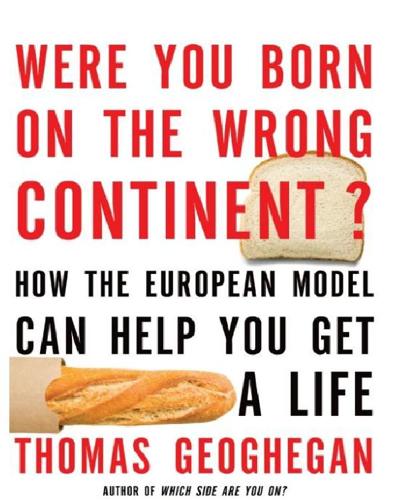
Were You Born on the Wrong Continent?
by
Thomas Geoghegan
Published 20 Sep 2011
There isn’t any, not in the German sense. There’s no industry. But the money keeps pouring in. They have political capital here, so it’s like Washington. And the kids are here because it’s so hip, so it’s like Berkeley or Portland, too. As a result, the basis of the entire economy is just hanging out. Prenzlauer Berg and Kreuzberg are packed with kids, kids, kids, spending their parents’ money. Can there be any world capital so completely supported by money from Mom and Dad? I try to think of stodgy German parents, blowing all this money on parties in Berlin. As my American friend Leo says, “Germans take out insurance on everything.
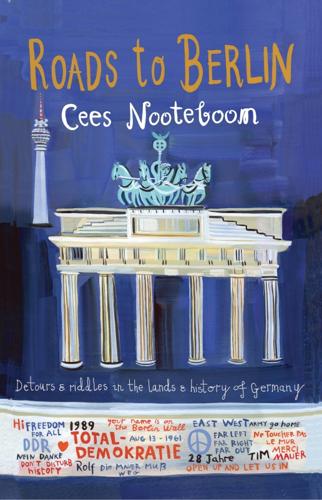
Roads to Berlin
by
Cees Nooteboom
and
Laura Watkinson
Published 2 Jan 1990
Liebe und Wahrheit sollen siegen über Lüge + Gewalt1 (Václav Havel) is written on the walls, words that were not there back then. Two weeks ago, I went to Falkplatz, a square that had recently been vacated by the D.D.R. border troops. Trees were to be planted in this saddest of all neighborhoods; everyone could bring something to plant, and the Prenzlauer Berg parks division and some other organizations were contributing a hundred trees. To coincide with the event, a demonstration of cyclists was riding to the square from Alexanderplatz, and as a “special treat” (Besonderes Bonbon) they would be allowed to cycle along the former Todesstreifen, or death strip, the empty space between the two lengths of Wall, a flat and bare piece of land, which made anyone running across it an easy target for the guards.

If Mayors Ruled the World: Dysfunctional Nations, Rising Cities
by
Benjamin R. Barber
Published 5 Nov 2013
A key asymmetry, which unfortunately has defined the Pentagon’s war against al Qaeda, involves weaponry and personnel: a B-1 bomber is not really a suitable response to a suicide bomber, while drones cannot be used against resident terrorists waiting to strike Boston from across the Charles river in Watertown, or to hit the new American embassy in Berlin from a fourth-floor apartment up the hill on Prenzlauer Berg. There is also a deeper asymmetry between the broad counterterrorist goals of nation-states and the narrower concerns of cities. The United States or France will seek an al Qaeda–free Afghanistan or, perhaps more improbably, a Taliban-free Afghanistan. But that is no guarantee that Mumbai or London or New York is safe from al Qaeda’s marauding offshoots like those operating in Libya or Mali today.
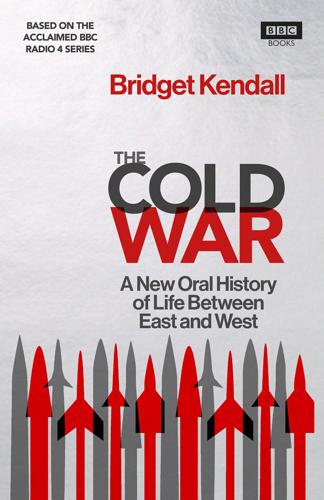
The Cold War: Stories From the Big Freeze
by
Bridget Kendall
Published 14 May 2017
And suddenly, it hit me that my birthday was in two days. What was going to happen with my birthday? That was in the morning. We children were not allowed to go to school, and we were not allowed to go on to the streets. Towards midday, we heard other sounds. I lived on Schönhauser Allee in Prenzlauer Berg, and that was the street that led to Berlin Pankow, where the government of the GDR was situated, and on that route were tanks. The sound of the tanks gave me goose pimples; I can remember that very clearly. That was very frightening, seeing the tanks and hearing the terrible sounds that they were making.
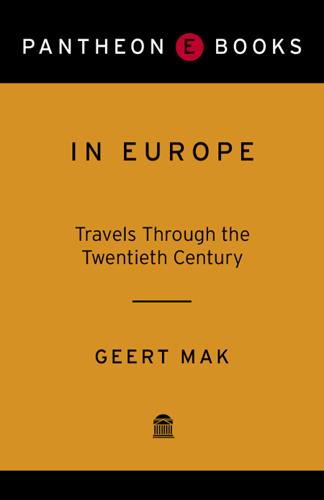
In Europe
by
Geert Mak
Published 15 Sep 2004
Hobrecht's vision of the integrated city had come to naught: the 1912 edition of the Bärenführer advised ‘adventuresome’ visitors to take a ride on the Ringbahn, to catch a glimpse of ‘that other Berlin’, where ‘hoi polloi’ lived. In my research, I came across a written complaint filed by residents of the Prenzlauer Berg neighbourhood concerning the lack of toilets. The reply from the Prussian civil servant stated that ‘an average bowel movement takes three to four minutes, including the time needed to arrange one's clothing’ and that ‘even if the bowel movement were to take ten minutes, the twelve hours in a day leave sufficient time for seventy-two persons to make use of the toilet.’

Post Wall: Rebuilding the World After 1989
by
Kristina Spohr
Published 23 Sep 2019
At the top, Erich Honecker envisaged a ‘Chinese solution’ to counter the mounting protests over the anniversary weekend (6–9 October),[20] prefigured in East Berlin when Stasi boss Erich Mielke jumped out of his bulletproof limo on the evening of 7 October screaming to police ‘Haut sie doch zusammen, die Schweine!’ (‘Club those pigs into submission!’).[21] That night in and around Prenzlauer Berg near the Gethsemane church, police officers, plain-clothes security forces and volunteer militia attacked some 6,000 demonstrators who shouted ‘Freedom’, ‘No violence’ and ‘We want to stay’, as well as bystanders, with dogs and water cannons – beating and kicking peaceful citizens and throwing hundreds into jail.